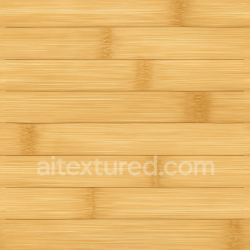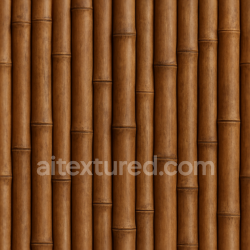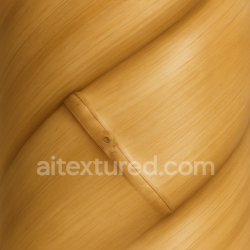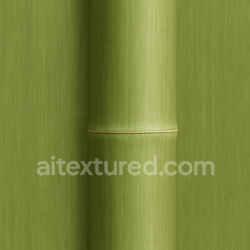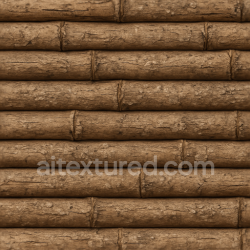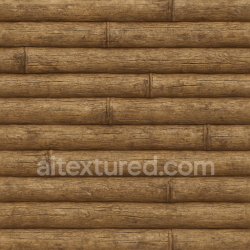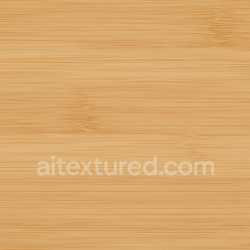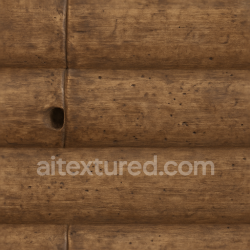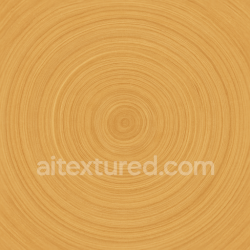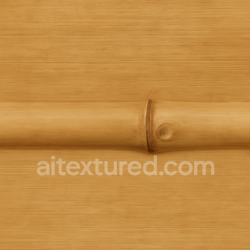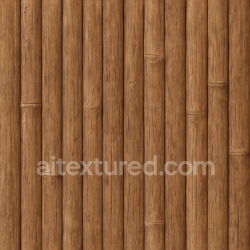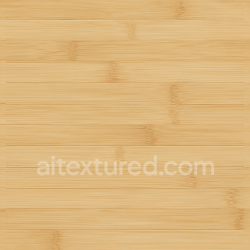Comprehensive Guide to Seamless PBR Coal Textures for Realistic 3D Surfaces
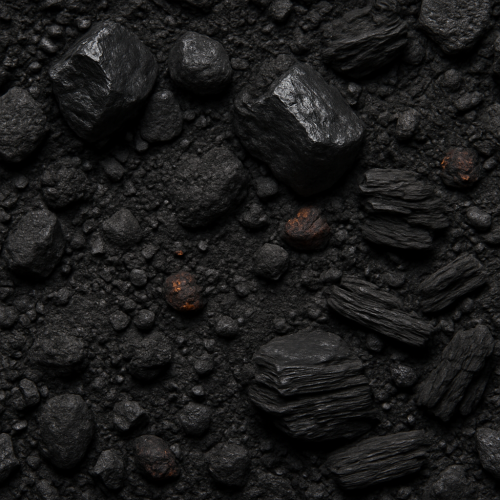
Acquiring high-quality PBR textures for coal surfaces demands a rigorous approach that balances fidelity, practicality, and adaptability for real-time engines like Unreal Engine or offline renderers within Blender. Coal’s inherently complex visual characteristics—its deep black albedo punctuated by subtle variations such as dust accumulation, micro-cracks, and stratified layering—necessitate a capture methodology that preserves these nuances while producing physically accurate texture maps. These maps typically include albedo (base color), roughness, normal, ambient occlusion (AO), height, and, where appropriate, metallic channels, each contributing critically to the final material response under varied lighting conditions.
Photogrammetry stands as a primary method for capturing coal textures with high detail and realism. However, the material’s near-absent specular highlights and generally low reflectance complicate traditional photogrammetric workflows. Coal’s surface often absorbs light rather than reflecting it, which challenges feature detection algorithms and can result in sparse or poorly aligned point clouds. To mitigate this, it is essential to employ a multi-angle, diffuse lighting setup that enhances subtle variations in surface geometry without introducing specular noise. Using a ring of diffuse LED panels or a light tent ensures even illumination, minimizing harsh shadows that obscure fine details while preventing specular hotspots that confuse the photogrammetry software.
When photographing coal samples, capturing high-resolution images with a macro lens is advisable to resolve micro-variations such as dust particles, fine cracks, and layering textures. These subtle details are crucial for generating normal and height maps that impart realistic surface microstructure, enabling convincing light interaction in PBR workflows. Careful calibration of camera settings is necessary: a low ISO reduces noise, a narrow aperture (higher f-stop) increases depth of field, and consistent white balance ensures color fidelity in the albedo map. It is also beneficial to bracket exposures or use high dynamic range (HDR) imaging to accommodate the coal’s low reflectivity and capture shadow detail that would otherwise be lost.
High-resolution 3D scanning technologies such as structured light or laser scanning can complement photogrammetry by capturing precise geometric detail of coal samples, especially where surface topology exhibits pronounced cracks or layering. These scans enable the creation of accurate displacement maps and detailed normal maps that amplify realism, particularly in close-up renders or when dynamic lighting accentuates surface relief. However, reflective and highly absorbent surfaces pose challenges for laser scanners, often requiring scanning sprays or mattifying agents to enhance surface detectability. While sprays alter the albedo, they can be used temporarily during scan acquisition and later removed digitally or compensated for in post-processing to preserve the original base color.
Seamless tiling is one of the most complex challenges in coal texture acquisition. Natural coal surfaces rarely exhibit uniform patterns, and the high contrast between smooth, dust-covered regions and cracked or layered areas makes naive tiling prone to visible repetition or seams. To address this, multiple texture patches should be captured with overlapping regions and substantial spatial variation. In post-production, these patches can be blended and tiled using specialized software with advanced edge-aware blending and micro-variation synthesis algorithms. Techniques such as texture quilting or procedural noise overlays help break up repetitive features. Additionally, generating multiple roughness and normal map variants from different patches allows shader-level blending or triplanar mapping in engines like Unreal Engine, which can further diminish tiling artifacts by introducing spatial randomness.
Accurate calibration between texture maps is paramount. The albedo map must represent the true diffuse color of coal without baked-in shadows or lighting artifacts, as these distort physically based shading calculations. Ambient occlusion maps, derived either from baked geometry or from photogrammetry mesh data, should be used to enhance shadowing in crevices and cracks without over-darkening flat areas. A common pitfall is the improper baking of AO into albedo, which can cause inconsistency when combined with engine lighting. Roughness maps for coal surfaces are especially important; coal’s matte, non-metallic nature generally yields high roughness values, but local variations caused by dust accumulation or polished layers must be accurately encoded to reveal subtle specular variations. Careful manual refinement or procedural adjustment of roughness maps may be necessary after initial capture to avoid overly flat or uniformly rough surfaces.
Normal maps derived from photogrammetric or scanning data require precise filtering and retouching to remove noise and preserve fine detail. For coal, where micro-geometry influences light scattering, normal map fidelity directly impacts the perception of surface depth and material authenticity. Similarly, height maps should be generated from high-resolution mesh data or displacement captures to facilitate parallax occlusion mapping or tessellation techniques in real-time engines. These height maps enable dynamic surface relief that responds convincingly to lighting and camera movement, enhancing immersion.
In practical pipeline terms, integrating coal textures into Blender or Unreal Engine involves optimizing map resolutions and compression settings to balance quality and performance. For example, Unreal Engine supports packed texture workflows (e.g., using the R, G, B, and A channels for roughness, metallic, AO, and height, respectively), which reduce memory footprint and draw calls. Since coal is non-metallic, its metallic channel is typically set to zero; however, in rare cases where coal surfaces are contaminated with metallic flecks or mineral inclusions, a subtle metallic mask can add realism. It is advisable to keep metallic channel data separate to allow selective masking rather than embedding it uniformly.
When authoring materials in Blender’s Principled BSDF shader, the coal texture set should be connected so that the base color input receives the albedo map, roughness input uses the refined roughness map, and normal maps are linked through a Normal Map node with correct color space settings. Ambient occlusion can be multiplied with the diffuse shader or integrated via a separate light path to enhance crevice shadows without affecting overall lighting. Height maps feed into displacement nodes if using adaptive subdivision, which is particularly effective for close-up shots.
Lighting during acquisition and rendering should mimic realistic environmental conditions to test texture behavior under indirect and direct light. Coal’s appearance changes significantly with angle and light intensity, so acquiring reference HDRI captures of actual coal environments or using calibrated studio lighting setups ensures that the PBR texture set will perform predictably across diverse scenes.
In summary, acquiring high-quality coal PBR textures involves a meticulous interplay of controlled photographic capture, precise scanning, careful map calibration, and strategic post-processing to capture the material’s complex surface variations. The goal is to produce a texture set that faithfully represents coal’s matte, layered, and subtly detailed nature while being optimized for real-time and offline rendering pipelines. Attention to lighting, tiling, and micro-variation synthesis ensures that the final texture assets remain physically plausible and visually convincing across various applications.
Creating convincing coal textures for physically based rendering (PBR) workflows involves a delicate balance between accurately capturing the material’s unique optical properties and providing sufficient flexibility for diverse artistic applications. Coal, as a surface material, presents distinct challenges due to its combination of deep, dark coloration, subtle reflective qualities, and heterogeneous microstructure characterized by embedded mineral inclusions and occasional ember-like glowing fragments. Both procedural generation and photographic editing approaches have their place in authoring coal PBR textures, and understanding how to leverage each method effectively is crucial for producing realistic and performant texture sets.
From a procedural standpoint, the primary objective is to algorithmically replicate the key visual aspects of coal—its diffuse albedo, roughness variation, normal detail, ambient occlusion, and, when appropriate, height and emissive maps—while ensuring seamless tiling and fine-grained micro-variations that prevent repetitive artifacts. The base color (albedo) of coal is typically a near-black tone interspersed with subtle color shifts ranging from deep grays to hints of brown and dark purples, depending on the type of coal and lighting conditions. Procedural texturing systems, such as those available in Blender's shader nodes or Substance Designer, can generate these color variations through noise functions layered with gradient ramps and color blending. Utilizing fractal noise or cellular noise patterns with carefully controlled thresholds enables the creation of patches that mimic coal’s uneven surface, including the occasional presence of mineral veins or impurities. These colored noise patterns should be modulated to maintain a low overall brightness, as coal’s albedo rarely exceeds very dark midtones, while still allowing for localized lightening to simulate variation across the surface.
Roughness is a critical channel for coal’s PBR workflow since it governs the material’s characteristic combination of matte and semi-glossy reflections. Procedural roughness maps are often synthesized by combining multiple noise scales—fine-grained high-frequency noise to represent micro-roughness and larger, lower-frequency noise to simulate cracks, chips, and uneven surface wear. By adjusting the contrast and blending these noise layers, artists can replicate the subtle interplay between matte areas and glossy, slightly reflective patches that coal exhibits. In practice, the roughness values tend to remain high overall (indicating a predominantly diffuse reflection), with occasional dips corresponding to smoother, slightly reflective inclusions. These procedural maps can be fine-tuned using curvature or slope data derived from the height or normal maps to further enhance realism by dynamically varying roughness based on surface orientation.
Normal maps in procedural coal texturing are generated by converting height or bump maps derived from layered noise patterns into tangent-space normals. The key challenge is to maintain a convincing microstructure that highlights coal’s rough, fractured surface without creating overly sharp features that appear artificial. To this end, multi-scale noise blending followed by a subtle blur or edge-preserving smoothing can help simulate the natural erosion and fracturing seen in coal lumps. It is often beneficial to include directional noise components aligned with expected geological strain or fracture directions to add realism. Normal maps should also be calibrated to ensure consistent intensity across tiling boundaries, avoiding visible seams or exaggerated surface details that can break immersion.
Ambient occlusion (AO) maps, while sometimes generated dynamically in real-time engines, remain important for offline or baked workflows. Procedurally authored AO maps for coal textures typically emphasize the crevices and pits within the surface irregularities, enhancing depth perception in shading. This is commonly achieved by using ambient occlusion nodes or ray-tracing techniques in authoring tools, applied to the base height geometry used for normal map generation. The AO map values should be subtly modulated to avoid overly dark shadows that might obscure detail or conflict with the dark albedo.
Height maps, essential for parallax occlusion mapping or displacement in engines like Unreal Engine or Blender’s Cycles and Eevee, are derived from the procedural noise patterns controlling the surface’s micro-roughness and fracture lines. The height data must be carefully scaled to prevent exaggerated displacement artifacts while preserving enough contrast to communicate the material’s uneven surface. Procedural height maps also serve as masks for blending roughness or emissive effects, enabling dynamic variation tied to surface topography.
While the metallic channel is generally unused for coal textures—since coal is a non-metallic, dielectric material—there are scenarios where minor mineral inclusions with metallic properties might warrant a localized metallic mask. Procedural authoring should therefore include the possibility of generating sparse metallic regions through thresholded noise or mask layers, if such geological features are to be simulated.
Photographic-based authoring complements procedural methods by providing a realistic baseline derived from high-resolution captures of real coal samples. Acquiring a well-lit, uniformly exposed photo set covering albedo, roughness, and height information is essential. Photogrammetry or multi-angle, multi-light captures can yield detailed albedo and normal maps, which serve as a foundation upon which further edits and optimizations are made. The photo-based albedo requires careful desaturation and color correction to remove lighting biases and ensure physical plausibility within PBR workflows. This calibration is often done by referencing neutral gray or black color targets photographed alongside the sample.
Roughness maps extracted from photographs typically come from specialized setups using polarizers or cross-polarization to isolate reflectance properties. When unavailable, roughness can be approximated by analyzing specular highlights and reflections in multiple images, followed by manual painting or procedural adjustments to correct noise or artifacts. Using software such as Substance Painter or Designer, artists can blend photographic roughness with procedural noise layers to enhance micro-variation and tailor the material for different engine requirements.
Normal maps can be derived from photogrammetry or converted from height maps obtained through photometric stereo or depth scans. These require post-processing to remove scanning noise, align with the texture UVs, and optimize for tileability. Seamless tiling is often addressed by using clone stamping, frequency separation techniques, or carefully designed edge blending in image editors. Height maps obtained from photos need similar treatment, including contrast normalization and edge smoothing, to be engine-ready for parallax or displacement workflows.
In terms of tiling, both procedural and photographic coal textures must address the material’s intrinsic irregularity to avoid obvious repetition. Procedural generation inherently supports seamless tiling by constructing noise functions with periodic parameters or applying seamless noise algorithms. However, care must be taken to introduce randomized offsets or mask blends at tile boundaries to reduce pattern uniformity. For photographic textures, creating seamless coal surfaces often involves manual clone stamping and texture synthesis techniques, such as PatchMatch or content-aware fills, combined with directional noise overlays to break up repeated patterns. Additionally, blending small-scale procedural noise over photographic bases can mask residual tiling artifacts and provide a cohesive micro-variation.
Calibration of coal textures in PBR involves validating the texture outputs under standardized lighting conditions, such as using HDR environment maps or physically accurate spotlights within the target rendering engine. Artists should ensure that the albedo remains within expected energy-conserving ranges (typically very low reflectance), roughness maps correctly influence specular behavior, and normal maps enhance detail without introducing unnatural shading artifacts. It is advisable to compare the authored textures against reference renders of real coal samples under similar lighting to fine-tune the material response.
Optimization considerations include balancing texture resolution against performance constraints. High-frequency detail in coal surfaces can be baked into normal and roughness maps at resolutions between 2048x2048 to 4096x4096 pixels for close-up views but may be downscaled or combined with detail normal maps for distant LODs. Efficient compression formats like BC5 for normal maps and BC7 for albedo and roughness channels are recommended to preserve fidelity while minimizing GPU memory usage.
When deploying coal textures in engines such as Unreal Engine or Blender, the workflow typically involves importing the texture maps into the material editor and correctly configuring the shader parameters. Unreal Engine’s physically based material model expects the albedo, roughness, normal, AO, and height maps to be assigned with appropriate sampler settings (e.g., sRGB disabled for all but albedo, mipmaps enabled for normal maps). Height maps are often connected to tessellation or parallax occlusion nodes for enhanced surface depth. In Blender’s Shader Editor, the Principled BSDF shader provides a straightforward node-based setup where texture maps are plugged into Base Color, Roughness, Normal (via a Normal Map node), and Displacement inputs, with AO often multiplied into the diffuse or combined with indirect lighting.
Practical tips include leveraging procedural masks to isolate emissive effects that simulate ember glows within coal. By combining noise patterns with color ramps and emissive channel inputs, artists can produce animated or static glowing spots that add visual interest and realism without requiring separate geometry or costly dynamic lights. Additionally, using curvature maps derived from normal data can guide localized adjustments in roughness or albedo, enhancing the perception of worn edges or surface deposits. Artists should also consider the environmental context of the coal texture, adjusting roughness and color to account for wetness or dust accumulation, which can be simulated procedurally or painted manually in photo-based workflows.
In summary, effective coal PBR texture authoring is a synthesis of procedural generation techniques that provide flexibility and seamless tiling, coupled with photographic editing that grounds the material in real-world appearance. Mastery of noise layering, color calibration, and map optimization allows artists to faithfully reproduce coal’s complex surface characteristics while maintaining efficient, engine-friendly assets. Both approaches, when integrated thoughtfully, empower artists to create versatile coal materials adaptable to a range of lighting scenarios and artistic directions.
Creating accurate PBR maps for coal surfaces involves a nuanced understanding of the material’s optical and physical characteristics, along with precise map authoring workflows that reflect its unique interactions with light. Coal, as a dense, carbonaceous rock, exhibits a complex surface behavior that combines deep, nearly black albedo values with subtle reflectance variations, fine-scale surface roughness transitions, and a non-metallic yet occasionally glossy finish in certain microfacets. Capturing these traits effectively in your texture maps ensures the resulting material maintains fidelity across diverse lighting environments and rendering engines, such as Unreal Engine or Blender’s Cycles and Eevee.
Starting with the albedo or base color map, coal’s inherent coloration is dominated by a very dark, almost absolute black hue, but it is critical to avoid a pure 0,0,0 RGB value. Pure black albedo can cause unrealistic energy absorption in PBR workflows, leading to loss of detail and improper light bounce calculations. Instead, subtle variations in the albedo channel should incorporate a very dark gray range, typically between 5 and 15 in 8-bit grayscale terms, with localized micro-variations that reflect the natural inclusions, ash deposits, or slightly oxidized patches found on coal surfaces. These minute tonal shifts can be captured through high-resolution photogrammetry scans or carefully constructed photographic source material, followed by calibrated color correction in tools like Substance Painter or Quixel Mixer. It is essential during this stage to linearize the albedo texture and ensure it remains within a plausible reflectance range; this can be verified by comparing rendered results under controlled HDRI lighting and adjusting the map to avoid over-darkening that breaks energy conservation in shaders.
The roughness map for coal demands particular attention because coal surfaces are not uniformly matte; they exhibit areas of polished sheen due to compaction and fracturing, contrasting with more porous or dusty regions. When authoring roughness, the values typically hover between mid to high roughness (0.6 to 0.9 in normalized terms), but localized patches with reduced roughness (down to 0.2 or 0.3) simulate the subtle glossy highlights visible on fractured or freshly split coal specimens. These patches should be blended organically using procedural noise generators or hand-painted masks to create believable micro-variation that prevents a flat, uniform appearance. Calibration of roughness can be done by cross-referencing physically measured data or photographic references under specular lighting, ensuring that highlights retain correct sharpness and spread. In engines like Unreal, it is beneficial to invert the roughness map preview (since some workflows use glossiness) and verify the material under both direct and indirect lighting to confirm accurate highlight behavior.
Normal maps for coal are instrumental in conveying minute surface irregularities such as fine grain, microfractures, and slight surface pitting that disrupt light reflection and enhance realism. Unlike metals or smooth plastics, coal’s surface topology is relatively coarse and uneven, so normal maps should encode medium-intensity perturbations rather than subtle bumps. When generating normal maps, it is common to employ high-resolution height maps derived from photogrammetry or displacement scans, which capture the depth and angular variations of the coal’s surface. These height maps can be converted to normal maps using tools such as xNormal, Substance Designer, or Blender’s bake functions. To prevent the normal map from appearing over-exaggerated and causing unrealistic shading artifacts, it is advisable to fine-tune the intensity and channel balance, often reducing the green channel influence slightly to avoid unnatural light scattering. Additionally, blending multiple layers of noise at varying scales can simulate the micro-roughness that coal exhibits, enhancing the tactile feel without resorting to overly strong displacement effects, which might be computationally expensive and unnecessary for mid-range asset detail.
Ambient occlusion (AO) maps play a crucial role in grounding the coal material by simulating how ambient light is occluded in crevices and surface cavities. Since coal surfaces typically contain porous regions and fissures, AO maps should capture localized shadowing that complements the normal map’s geometry. AO can be baked from high-poly models or generated procedurally by analyzing curvature and cavity exposure within the texturing software. When authoring AO for coal, the tonal range generally skews toward moderate occlusion values to avoid overly dark shading that could obscure detail in shadowed areas. The AO map must be carefully calibrated so that it subtly modulates ambient lighting without introducing harsh black spots, which can break the visual consistency, especially under dynamic lighting conditions in real-time engines. Integrating AO with the base color and roughness channels during shader setup helps maintain visual coherence and enhances perceived depth on the coal surface.
Height or displacement maps, while not always necessary for all coal materials, can substantially improve realism when applied judiciously. These maps must accurately represent the topographical fluctuations of the coal surface, including pits, cracks, and surface roughness, without generating geometry artifacts or excessive tessellation overhead. In real-time engines like Unreal, height maps are often employed in parallax occlusion mapping or tessellation shaders to provide depth cues during close-up inspection. During their creation, height maps should encompass a normalized range where the maximum displacement corresponds to the actual physical scale of surface irregularities. Overly exaggerated height values can introduce self-shadowing artifacts or silhouette distortion, whereas underwhelming values fail to convey the material’s ruggedness. When authoring height maps, it is advisable to smooth unwanted noise that does not contribute positively to the visual impression and to test the displacement under varied camera angles and lighting setups.
The metallic map for coal is, in most cases, straightforward: coal is a non-metallic material, so the metallic channel should be set to zero across the texture. However, some rare variants of coal, such as those with pyrite inclusions or mineralized veins, may warrant localized metallic values. If these features are present in the asset, the metallic map must encode them with precise masking, ensuring that reflective behavior matches the metallic nature of the inclusion without affecting the bulk coal material. This selective metallic encoding can be achieved during texturing by isolating these features in grayscale masks that feed into the metallic channel, allowing the shader to differentiate between true metallic reflections and the diffuse carbonaceous matrix.
Calibration across all PBR maps is essential to maintain physically plausible light interaction. A common practice involves setting up a controlled lighting environment within the target engine or renderer, such as Unreal Engine’s HDRI sky lighting combined with directional light simulating sunlight. By rendering a simple sphere or plane with the coal material applied, one can observe the interaction of light, shadow, and reflections, iteratively tuning albedo brightness, roughness contrast, normal intensity, and AO strength. This process should be carried out with linear workflow and correct gamma settings enabled to avoid perceptual discrepancies. Additionally, it is beneficial to verify the maps under both neutral and colored lighting conditions to ensure the material’s response is consistent and believable, avoiding color shifts or highlight clipping.
When implementing coal PBR textures in Blender, artists should leverage the Principled BSDF shader, which inherently supports metallic, roughness, normal, and AO inputs. Proper node setup involves feeding the calibrated albedo map into the base color, the roughness map directly into the roughness input (inverting if necessary depending on the source), and the normal map through a Normal Map node to correctly interpret tangent space data. AO can be multiplied into the base color or applied as a separate input to the subsurface or diffuse channels, depending on the desired effect and engine compatibility. For real-time engines like Unreal, coal materials benefit from careful use of the material editor’s texture samplers and proper mipmap generation settings to maintain detail at varying distances. Ensuring the use of sRGB color space for albedo and linear space for roughness and normal maps is also critical to avoid rendering inconsistencies.
Tiling strategies for coal textures must address the repetitive patterns inherent in natural stone surfaces. Due to coal’s relatively featureless black coloration, tiling artifacts can become noticeable if the micro-variation is insufficient. To combat this, authors often introduce subtle procedural noise overlays or variation masks combined with high-frequency detail in normal and roughness maps. This approach breaks up uniformity and prevents the “rubber stamp” effect common in tiled materials. When preparing textures, using seamless UV mapping techniques and edge blending ensures that seams are minimized. Moreover, incorporating multi-scale detail—macro variation for large surface cracks and micro-variation for granular texture—helps anchor the coal surface visually within a scene.
In summary, the creation and calibration of PBR texture maps for coal demands a rigorous approach to capturing the material’s near-black albedo with nuanced variation, carefully modulated roughness that reflects heterogeneous surface finishes, robust normal maps encoding medium-intensity microtopography, subtle ambient occlusion for depth perception, and an appropriately zeroed metallic channel. Height maps supplement these when displacement is required, and calibration under realistic lighting setups in engines like Unreal or Blender completes the workflow, ensuring that the coal material responds authentically and consistently in physically based rendering pipelines.
